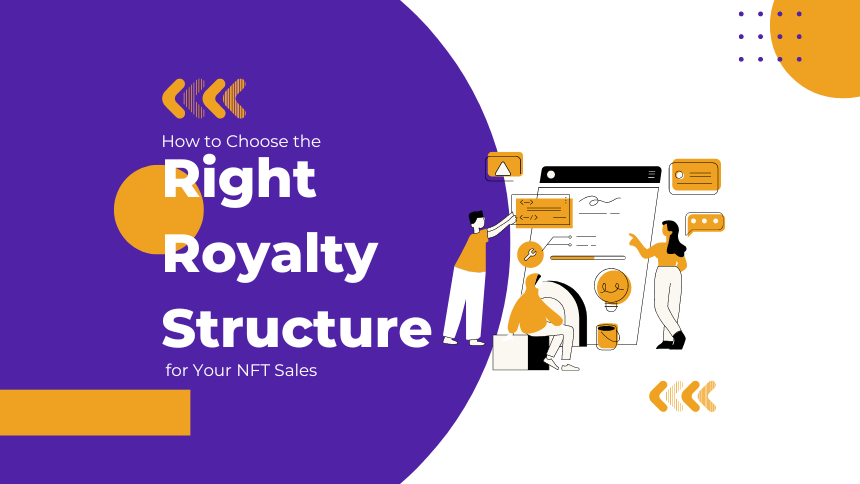NFT sales have become a prominent avenue for artists and creators to showcase and sell their digital works to a global audience. One crucial aspect of NFT sales that often requires careful consideration is the royalty structure. Deciding on the right royalty structure can significantly impact an artist’s earnings and long-term success in the NFT marketplace. In this article, we’ll delve into the intricacies of royalty structures for NFT sales, providing valuable insights and guidance for artists and creators aiming to maximize their returns in the digital art space.
Understanding Royalty Structures for NFT Sales:
Before delving into the specifics of royalty structures, it’s essential to understand what royalties are and how they function in the context of NFT sales. Royalties refer to the percentage of revenue generated from the resale of an NFT that is paid to the original creator or rights holder. This resale royalty ensures that artists continue to benefit from the appreciation of their work even after the initial sale.
Factors to Consider When Choosing a Royalty Structure:
Percentage Rate:
The percentage rate of the royalty is a crucial factor to consider when choosing a royalty structure for your NFT sales. The standard royalty rate in the NFT marketplace typically ranges from 5% to 10% of the resale price. However, creators have the flexibility to set their own royalty rates based on the perceived value of their work and market demand.
Longevity of Royalties:
Another consideration is the longevity of royalties, i.e., how many times the NFT can be resold before the royalty expires. Some platforms offer perpetual royalties, meaning that creators receive royalties on every subsequent resale of the NFT indefinitely. In contrast, others may have a limited number of resales or a fixed duration for royalties.
Platform Policies:
It’s essential to familiarize yourself with the royalty policies of the NFT marketplace or platform where you plan to list your NFTs. Each platform may have its own royalty structure and terms of service regarding royalties. Some platforms automatically enforce royalties on all NFT sales, while others allow creators to set their own royalty rates.
Market Trends and Demand:
Consider market trends and demand when setting your royalty structure. Higher royalty rates may deter potential buyers, especially in a competitive market. Conversely, lower royalty rates may attract more buyers but result in lower earnings for the creator. Strike a balance between maximizing earnings and incentivizing resale activity.
Future Value and Brand Reputation:
Think long-term about the future value and reputation of your brand as an artist or creator. A fair and reasonable royalty structure can enhance your brand’s reputation and encourage collectors to support your work. Conversely, overly aggressive royalty structures may alienate collectors and damage your brand’s credibility in the long run.

Examples of Royalty Structures:
Let’s explore some common royalty structures adopted by artists and creators in the NFT marketplace:
- Fixed Percentage Royalty: The creator sets a fixed percentage royalty rate (e.g., 10%) on all resale transactions of their NFTs.
- Tiered Royalty Structure: The royalty rate varies based on the resale price of the NFT, with higher resale prices subject to higher royalty rates.
- Dynamic Royalty: The royalty rate adjusts dynamically based on market conditions, demand for the NFT, or the creator’s reputation.
- Split Royalty: Multiple creators or rights holders share royalties from the resale of the NFT, with each party receiving a predetermined percentage.
Conclusion:
In conclusion, choosing the right royalty structure for your NFT sales is a critical decision that can impact your earnings and long-term success as an artist or creator. By considering factors such as the percentage rate, longevity of royalties, platform policies, market trends, and future value, you can develop a royalty structure that aligns with your goals and maximizes your returns in the NFT marketplace.
Whether you opt for a fixed percentage royalty, tiered structure, dynamic royalties, or a split royalty arrangement, prioritize transparency, fairness, and sustainability to build trust and loyalty among collectors. With careful consideration and strategic planning, you can leverage royalty structures to monetize your digital creations and establish yourself as a prominent figure in the evolving world of NFT sales in India and beyond.
